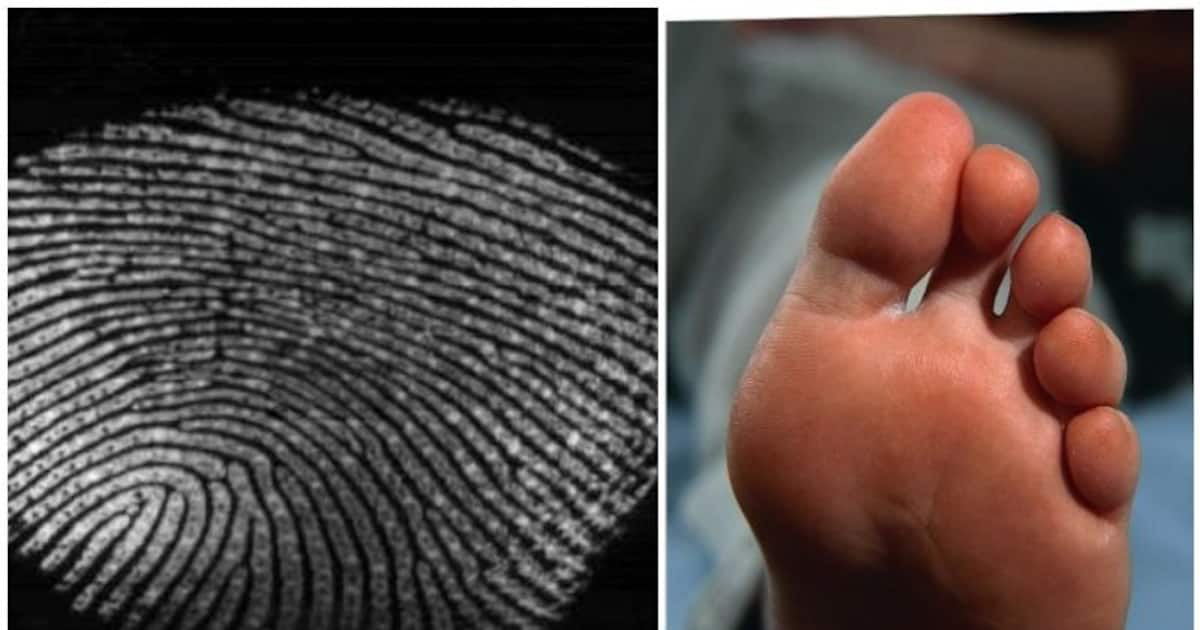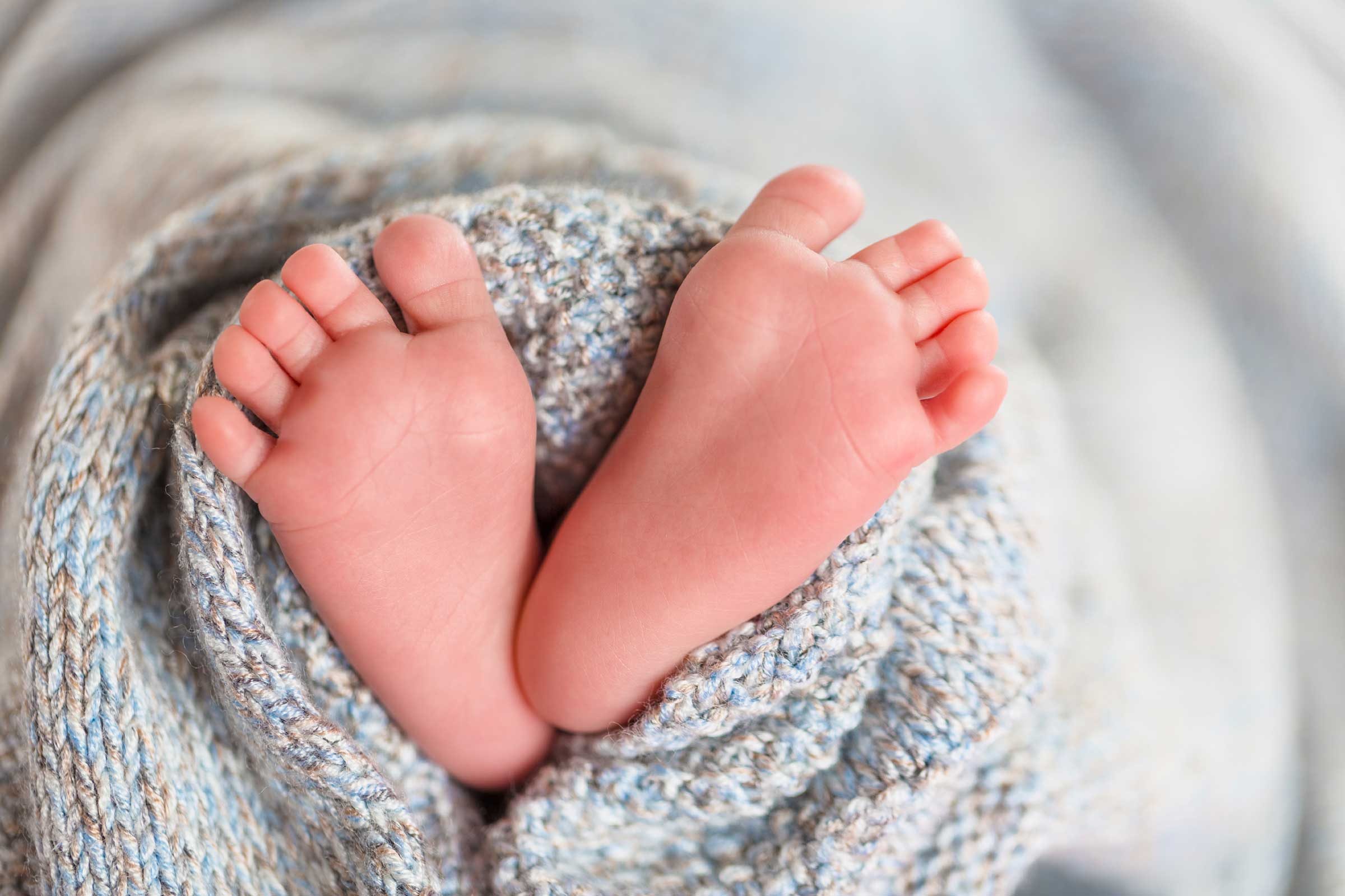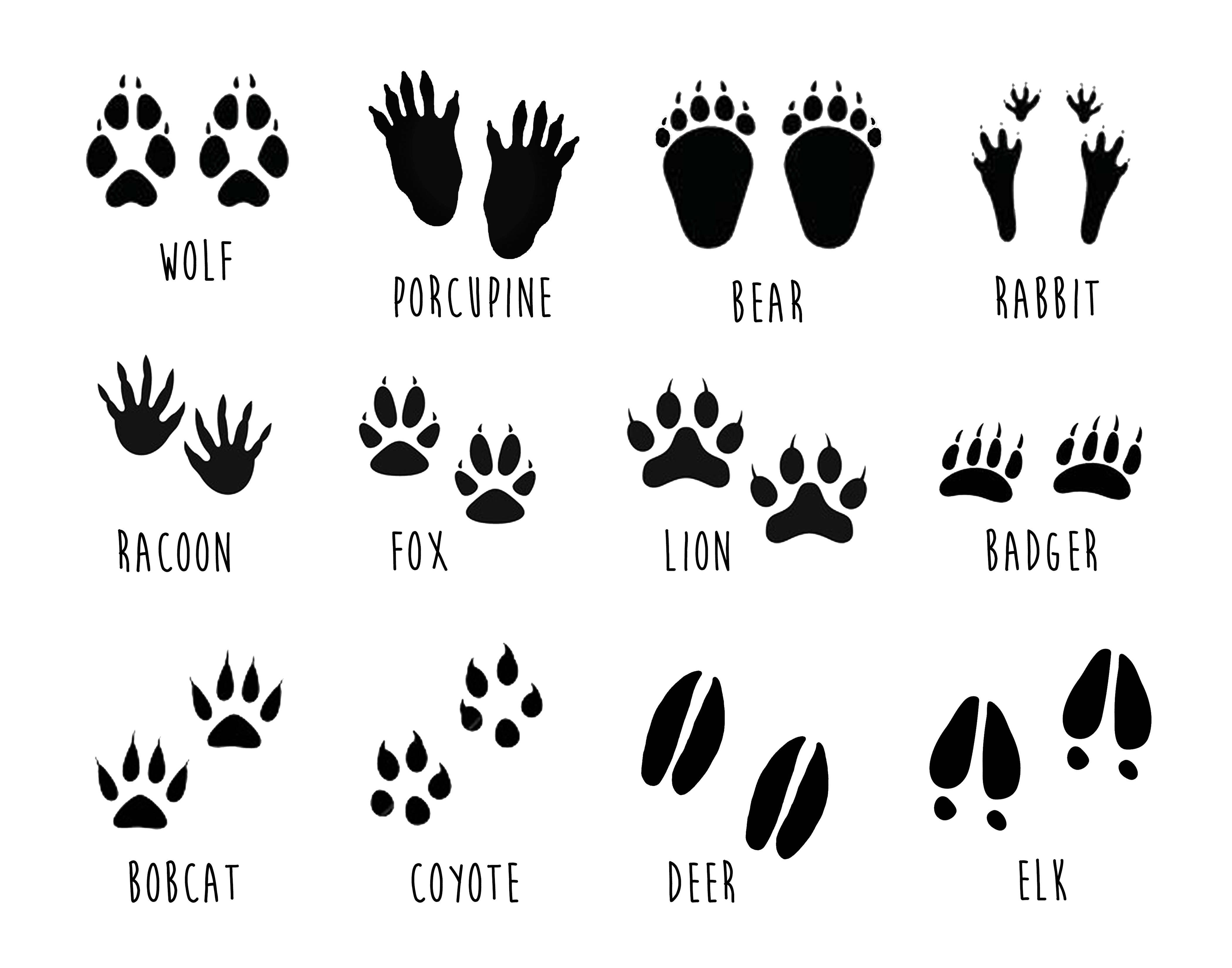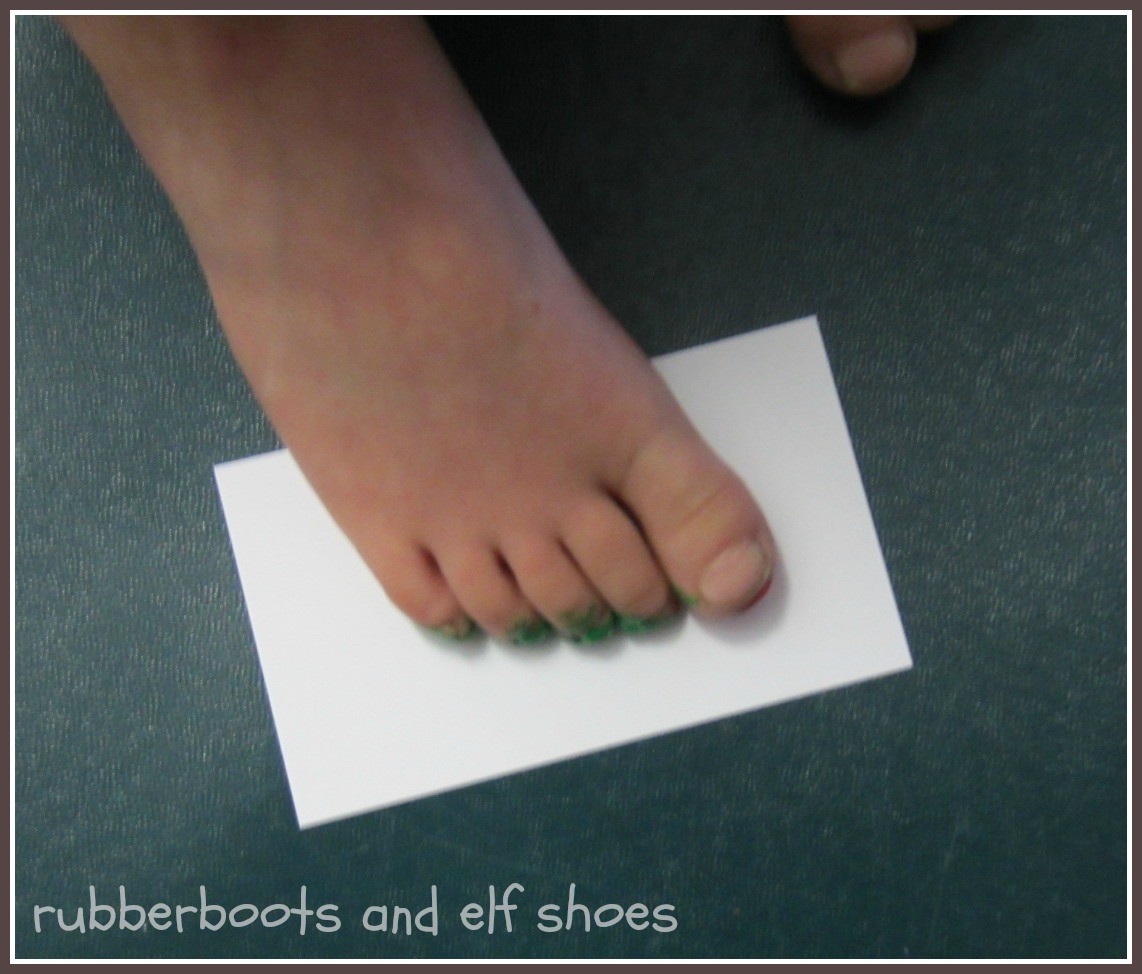Do toes have prints? This intriguing question sparks a fascinating journey into the world of toe prints, revealing their uniqueness, applications, and cultural significance. From their role in forensic investigations to their potential in medical diagnosis, toe prints offer a captivating insight into human identity and health.
Unveiling the intricate patterns and characteristics of toe prints, this exploration delves into the science behind their formation, the methods used for their identification, and the historical and contemporary uses of toe prints. Join us as we unravel the secrets hidden within the prints of our toes.
Unique Toe Prints
Toe prints, similar to fingerprints, are distinctive patterns formed by the ridges and grooves on the skin of toes. However, unlike fingerprints, which are highly individualized and serve as a reliable means of identification, toe prints are not considered unique.
While toe prints can vary from person to person, they are generally not as complex or distinct as fingerprints. The patterns on toes tend to be more generalized and less detailed, making it difficult to use them for precise identification purposes.
Similarities and Differences between Toe Prints and Fingerprints
- Both toe prints and fingerprints are formed by the unique arrangement of ridges and grooves on the skin’s surface.
- Both are influenced by genetics and environmental factors during development.
- Both are considered persistent throughout an individual’s life, remaining relatively unchanged over time.
However, there are key differences between toe prints and fingerprints:
- Complexity:Fingerprints are much more complex and detailed than toe prints, with a greater number of ridge patterns and variations.
- Uniqueness:Fingerprints are highly individualized, with each person having a unique pattern that is not shared with anyone else. Toe prints, on the other hand, are not as unique and can often share similarities between individuals.
- Reliability for Identification:Fingerprints are widely accepted and used for identification purposes due to their high level of uniqueness. Toe prints, however, are not considered reliable for identification due to their lack of individuality.
Toe Print Identification
Toe prints, like fingerprints, are unique to each individual. They can be used for identification purposes in forensic investigations and other applications.
The methods used for toe print identification are similar to those used for fingerprint identification. The first step is to obtain a clear impression of the toe print. This can be done using a variety of methods, such as rolling the toe in ink and then pressing it onto paper or using a digital scanner.
While it is widely known that fingerprints are unique to each individual, the question of whether toes have unique prints remains unanswered. Research in this area is ongoing, and preliminary studies suggest that toe prints may indeed be unique. However, further investigation is required to establish this conclusively.
In the meantime, for those seeking to connect a wireless printer after changing their router, a comprehensive guide is available here. Returning to the topic of toe prints, future research may shed light on their potential use in forensic identification and other applications.
Once an impression of the toe print has been obtained, it can be analyzed to identify unique characteristics. These characteristics include the shape of the toe, the arrangement of the ridges and furrows on the toe, and the presence of any scars or other markings.
Accuracy and Reliability
Toe print identification is a highly accurate and reliable method of identification. Studies have shown that toe prints are as unique as fingerprints, and they can be used to identify individuals even when other forms of identification, such as fingerprints, are not available.
However, it is important to note that toe print identification is not foolproof. There are some cases in which toe prints can be smudged or otherwise distorted, making it difficult to obtain a clear impression. Additionally, some individuals may have toe prints that are very similar to those of other individuals, making it difficult to distinguish between them.
Historical Significance

Toe prints have been used for identification purposes for centuries. In ancient China, toe prints were used to identify criminals. In the 19th century, toe prints were used to identify soldiers in the American Civil War.
Anecdotes and Case Studies
One of the most famous cases of toe print identification occurred in 1902. In that case, a man was accused of murdering his wife. The only evidence against him was a bloody toe print found at the scene of the crime.
The toe print was compared to the man’s toe prints, and they were found to be a match. The man was convicted of murder.Another case of toe print identification occurred in 1984. In that case, a woman was accused of shoplifting.
The only evidence against her was a toe print found on a stolen item. The toe print was compared to the woman’s toe prints, and they were found to be a match. The woman was convicted of shoplifting.These are just a few examples of the many cases in which toe prints have been used for identification purposes.
Toe prints are a unique and reliable way to identify individuals.
Medical Applications
Toe print analysis has a variety of medical applications, including the diagnosis of certain conditions.
One of the most common uses of toe print analysis is in the diagnosis of developmental disorders. Toe prints can be used to identify children who are at risk for developmental delays or disabilities, such as autism spectrum disorder and cerebral palsy.
Dermatoglyphics
Dermatoglyphics is the study of skin patterns, including those on the toes. Dermatoglyphic patterns are unique to each individual and can be used for identification purposes. They can also be used to diagnose certain medical conditions, such as Down syndrome and Turner syndrome.
Forensic Applications

Toe prints have emerged as a valuable tool in forensic investigations, providing unique and reliable evidence in criminal cases.
One of the key advantages of toe prints is their persistence. Unlike fingerprints, which can be easily smudged or altered, toe prints are more resistant to damage and can remain intact for longer periods.
Toe Print Collection and Analysis
Collecting toe prints for forensic purposes involves several steps:
- Inkless Method:Using a black powder or chemical solution to create a temporary impression on a white surface.
- Ink Method:Applying ink to the toe and then pressing it onto a piece of paper or card.
- 3D Scanning:Using a specialized scanner to capture a three-dimensional image of the toe print.
Once collected, toe prints are analyzed by comparing them to known prints from suspects or to a database of toe prints.
Examples of Toe Print Use in Crime Solving
- In 2010, toe prints left at a crime scene in California helped identify a suspect in a murder case.
- In 2015, toe prints found on a stolen car in New York City led to the arrest of a car thief.
Limitations and Guidelines
While toe prints are valuable forensic evidence, there are some limitations to their use:
- Availability:Toe prints may not always be present at crime scenes.
- Quality:The quality of toe prints can vary depending on factors such as the surface and the condition of the toe.
To ensure proper collection and preservation of toe prints at crime scenes, it is essential to follow established guidelines:
- Document the Scene:Photograph and document the location of the toe prints.
- Protect the Prints:Cover the toe prints with a protective covering to prevent contamination.
- Collect the Prints:Use the appropriate method to collect the toe prints and store them in a secure container.
Cultural Variations

The significance of toe prints varies across cultures worldwide. In some societies, toe prints hold religious or spiritual importance, while in others, they may be used for practical purposes such as identification.
Religious and Spiritual Beliefs
In certain cultures, toe prints are believed to possess spiritual significance. For example, in some Native American traditions, toe prints are considered sacred symbols that represent the connection between humans and the earth.
Identification and Practical Uses
In some cultures, toe prints are used for identification purposes. For instance, in Japan, toe prints are commonly used as a form of identification for infants, similar to fingerprints.
Cultural Practices
In some cultures, toe prints are incorporated into traditional practices. For example, in India, toe prints are often used as a decorative element in henna designs during weddings and other celebrations.
Artistic Representations

Toe prints have captivated artists throughout history, inspiring a diverse range of artistic expressions. These representations transcend mere physical impressions, becoming evocative symbols that convey profound meanings and emotions.
Symbolism and Meaning
In various cultures, toe prints have been associated with vulnerability, mortality, innocence, and the passage of time. Vincent van Gogh’s “Toe Prints in the Sand” depicts footprints in the sand, evoking a sense of transience and the inevitability of death.
Auguste Rodin’s “Bronze Baby Toe” symbolizes the fragility and purity of childhood.
Artistic Movements and Styles
Toe prints have been incorporated into different artistic movements and styles. In photography, Ansel Adams’ “Footprints on the Beach” captures the awe-inspiring vastness of nature, while Ai Weiwei’s “Digital Toe Print” explores the themes of surveillance and privacy in the digital age.
Storytelling and Emotional Evocation
Toe prints have played a significant role in storytelling, serving as powerful metaphors and triggers for emotions. Edgar Allan Poe’s “The Tell-Tale Toe” uses toe prints as a symbol of guilt and paranoia, evoking a sense of unease and dread.
Notable Artworks
Numerous notable artworks feature toe prints as central elements. Michelangelo’s “Creation of Adam” depicts God’s finger touching Adam’s toe, symbolizing the divine spark and the connection between humanity and the divine. Leonardo da Vinci’s “Mona Lisa” includes a subtle toe print in the foreground, adding a touch of realism and intrigue to the enigmatic masterpiece.
Footwear and Toe Prints

Footwear can significantly impact the formation and visibility of toe prints. Different shoe designs can alter the pressure distribution on the foot, leading to variations in the toe print patterns.
High Heels
High heels elevate the heel, shifting weight towards the forefoot. This increased pressure on the toes can result in more defined and visible toe prints. Additionally, the pointed toe design of many high heels can further concentrate pressure on the big toe, leading to a prominent big toe print.
Boots
Boots, particularly those with thick soles, can obscure toe prints due to the reduced pressure on the toes. The rigid structure of boots also limits the movement of the toes, resulting in less distinct toe print patterns.
Sandals
Sandals, on the other hand, provide minimal coverage for the feet, allowing for clear and detailed toe prints. The open design of sandals ensures even pressure distribution across the toes, resulting in well-defined toe print patterns.
Table: Key Differences in Toe Print Patterns Based on Footwear Type
| Footwear Type | Pressure Distribution | Toe Print Visibility | Toe Print Characteristics |
|---|---|---|---|
| High Heels | Increased on forefoot | High | Defined, prominent big toe print |
| Boots | Reduced on toes | Low | Obscured, less distinct |
| Sandals | Even across toes | High | Clear, well-defined |
Age and Gender Factors

Age and gender play a significant role in determining the characteristics of toe prints. As individuals age, the size and shape of their toes change, leading to variations in their toe print patterns.
Generally, children have smaller and narrower toes compared to adults. Their toe prints often exhibit less defined ridges and whorls due to the underdeveloped dermal patterns. As children grow older, their toes become larger, and their toe print patterns become more complex and distinct.
Gender Differences
Gender also influences toe print characteristics. Males tend to have larger and broader toes than females, resulting in larger and more widely spaced toe prints. Additionally, males are more likely to have prominent toe ridges and whorls compared to females, who often have smoother and less defined toe print patterns.
Toe Print Databases: Do Toes Have Prints
Toe print databases are centralized repositories that store and manage digital records of individuals’ toe prints for identification purposes. These databases are established and maintained by various agencies, including law enforcement, government entities, and research institutions.
Data collection for toe print databases typically involves capturing high-resolution images or scans of individuals’ toes. The images are processed and converted into digital formats, which are then stored in the database. Database design and organization vary depending on the specific purpose and requirements of the database.
However, common elements include secure storage systems, efficient indexing and search mechanisms, and robust data management protocols.
Storage and Security Measures
Toe print databases employ stringent storage and security measures to protect the sensitive data they contain. Data is typically encrypted and stored in secure servers with access restricted to authorized personnel. Regular backups and disaster recovery plans ensure data integrity and availability in case of system failures or security breaches.
Purpose and Benefits
Toe print databases serve a crucial role in identification, particularly in forensic science, missing person cases, and wildlife tracking. Toe prints, like fingerprints, exhibit unique characteristics that allow for individual identification. Comparison methods involve analyzing the patterns, ridges, and other features of toe prints to determine matches or exclusions.
The accuracy rates of toe print identification are comparable to those of fingerprint identification. This makes toe print databases a valuable tool for forensic investigations, where traditional methods of identification may be compromised or unavailable.
Toe prints are not unique to humans, as some animals also have distinct toe patterns. While the use of toe prints for identification purposes is limited, it has been explored as a potential method in forensic science. For those interested in crafting personalized items, how to make stickers with cricut without printer provides a step-by-step guide to create custom stickers using a Cricut machine without the need for a printer.
The process involves designing the sticker in a software program, cutting the design using the Cricut machine, and applying adhesive to the back of the cut design.
Applications
- Forensic Science:Toe print databases assist in identifying suspects or victims in criminal investigations, particularly when fingerprints are not available or of poor quality.
- Missing Person Cases:Toe prints can be used to identify missing persons, especially when other forms of identification are lacking or inconclusive.
- Wildlife Tracking:Toe print databases are employed in wildlife research and conservation efforts to track individual animals and study their behavior and movement patterns.
Legal Considerations
The analysis of toe prints has significant legal implications, including the admissibility of toe prints as evidence in court cases, chain of custody issues, expert witness qualifications, and ethical considerations. Legal frameworks governing toe print analysis vary across different jurisdictions, including common law jurisdictions, civil law jurisdictions, and international conventions.
Admissibility of Toe Prints as Evidence
The admissibility of toe prints as evidence in court cases depends on the jurisdiction and the specific circumstances of the case. In general, toe prints may be admissible as evidence if they are relevant to the case, if they were obtained legally, and if they are properly authenticated by an expert witness.
Chain of Custody
The chain of custody refers to the process of documenting the handling of evidence from the time it is collected until it is presented in court. A proper chain of custody is essential to ensure the integrity and reliability of the evidence.
In the case of toe prints, the chain of custody should include documentation of the following:
- Who collected the toe prints
- When and where the toe prints were collected
- How the toe prints were collected
- Who has had possession of the toe prints since they were collected
Expert Witness Qualifications
Expert witnesses are individuals who have specialized knowledge, skill, experience, training, or education in a particular field. In the case of toe print analysis, expert witnesses must have the necessary qualifications to interpret and testify about toe prints. These qualifications may include:
- A degree in forensic science or a related field
- Experience in toe print analysis
- Certification from a recognized professional organization
Ethical Considerations
There are several ethical considerations that must be taken into account when conducting toe print analysis. These considerations include:
- The privacy of the individuals whose toe prints are being analyzed
- The potential for bias or discrimination in toe print analysis
- The use of toe print analysis for purposes other than law enforcement
Legal Frameworks, Do toes have prints
The legal frameworks governing toe print analysis vary across different jurisdictions. In common law jurisdictions, such as the United States, the admissibility of toe prints as evidence is governed by the rules of evidence. In civil law jurisdictions, such as France, the admissibility of toe prints as evidence is governed by the code of criminal procedure.
There are also several international conventions that address the use of toe print analysis in law enforcement. These conventions include the Universal Declaration of Human Rights, the International Covenant on Civil and Political Rights, and the Convention against Torture and Other Cruel, Inhuman or Degrading Treatment or Punishment.
Case Studies
There have been several high-profile cases in which toe print analysis has been used to identify suspects and convict criminals. One of the most famous cases is the case of the “Shoe Print Killer.” In this case, a serial killer was identified and convicted based on the analysis of toe prints left at the crime scenes.
Ethical Concerns

The collection and analysis of toe prints raise potential ethical concerns that must be considered to ensure the responsible and ethical use of this biometric data.
One primary concern is privacy. Toe prints are unique identifiers that can be used to track individuals without their knowledge or consent. It is essential to obtain informed consent from individuals before collecting their toe prints and to ensure that the data is used only for legitimate purposes.
Potential for Discrimination and Bias
Another concern is the potential for discrimination and bias in toe print analysis. Like other biometric data, toe prints can be used to identify and categorize individuals based on their physical characteristics. This raises the risk of discrimination against certain groups, such as those with certain ethnic or racial backgrounds.
Law Enforcement and Surveillance
The use of toe print data for law enforcement and surveillance also raises ethical concerns. Toe prints can be used to track individuals’ movements and activities, which could potentially infringe on their privacy rights. It is important to ensure that toe print data is used only for legitimate law enforcement purposes and that appropriate safeguards are in place to prevent its misuse.
Best Practices
To address these ethical concerns, it is essential to implement best practices for the ethical use of toe print data. These practices include:
- Obtaining informed consent from individuals before collecting their toe prints
- Limiting the use of toe print data to legitimate purposes
- Implementing strong data protection measures to prevent unauthorized access or misuse
- Establishing clear guidelines for the use of toe print data in law enforcement and surveillance
- Regularly reviewing and updating ethical guidelines to ensure they remain relevant and effective
Future Developments

Toe print analysis technology is expected to witness significant advancements in the coming years. One of the most promising areas of research is the development of AI-powered systems for toe print analysis. These systems can automate the process of toe print identification, making it faster and more accurate.
AI-powered systems can also be used to develop new toe print analysis algorithms that can improve the accuracy and reliability of toe print identification.Another promising area of research is the use of 3D scanning techniques for toe print analysis. 3D scanning can create highly detailed 3D models of toe prints, which can be used for improved image analysis and matching capabilities.
This technology has the potential to revolutionize toe print identification, making it even more accurate and reliable.
Comparative Analysis

Toe prints share similarities with other biometric identification methods, such as fingerprints and iris scans, in that they offer unique patterns for each individual. However, there are also key differences between these methods, including the level of detail, accuracy, and ease of collection.
Fingerprints
Fingerprints are considered the gold standard for biometric identification due to their high level of detail and accuracy. Each fingerprint contains a unique pattern of ridges and valleys, which can be used to create a highly specific identification template. Fingerprints are also relatively easy to collect, using a variety of methods such as ink and paper or electronic scanners.
Iris Scans
Iris scans are another highly accurate biometric identification method. The iris is the colored part of the eye, and it contains a unique pattern of blood vessels and other features. Iris scans are collected using a specialized camera that captures a high-resolution image of the iris.
This image can then be used to create a unique identification template.
Toe Prints
Toe prints are less detailed than fingerprints and iris scans, but they still offer a unique pattern for each individual. Toe prints are typically collected using a scanner that captures an image of the toes. This image can then be used to create a unique identification template.
Advantages and Disadvantages of Each Method
- Fingerprints:Advantages include high level of detail, accuracy, and ease of collection. Disadvantages include the potential for smudging or damage to the fingerprints, and the possibility of false positives or negatives due to environmental factors.
- Iris Scans:Advantages include high level of accuracy and the difficulty of forging or replicating an iris pattern. Disadvantages include the need for specialized equipment to collect the scans, and the potential for discomfort or irritation to the eyes.
- Toe Prints:Advantages include the ease of collection and the low cost of equipment. Disadvantages include the lower level of detail compared to fingerprints and iris scans, and the potential for false positives or negatives due to factors such as foot injuries or deformities.
FAQ Corner
Are toe prints as unique as fingerprints?
Yes, toe prints are unique to each individual, just like fingerprints. Each toe print has its own distinct pattern of ridges and whorls, making it possible to identify individuals based on their toe prints.
Can toe prints be used to solve crimes?
Yes, toe prints have been successfully used to solve crimes, particularly in cases where fingerprints are not available or smudged. Toe prints can be found at crime scenes on various surfaces, such as floors, walls, and objects.
Are toe prints used in medical diagnosis?
Yes, toe prints can be used to diagnose certain medical conditions, such as genetic disorders and developmental abnormalities. The patterns and characteristics of toe prints can provide valuable insights into an individual’s health.


